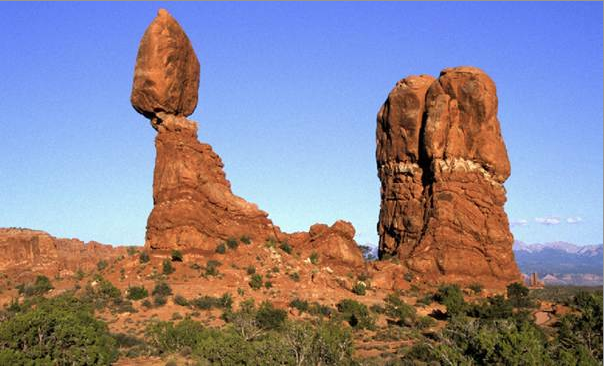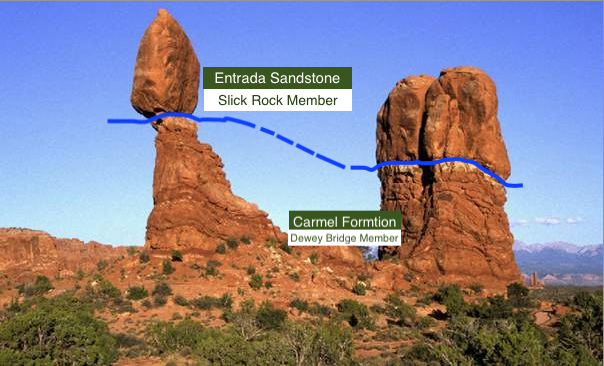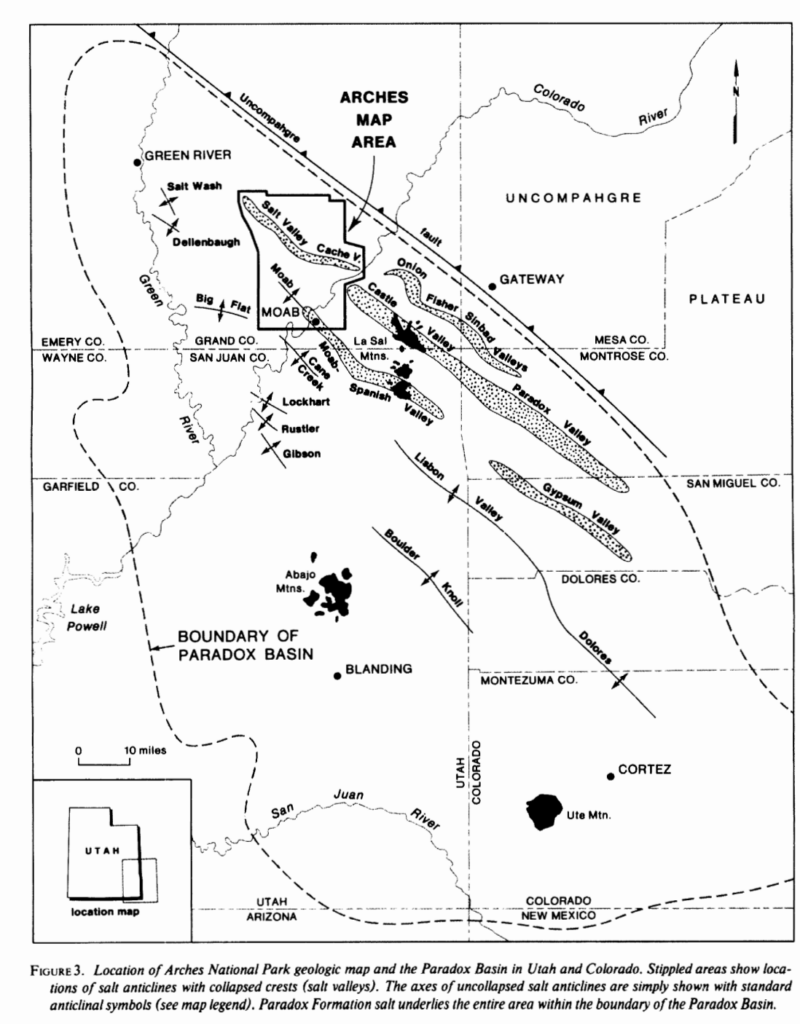Balanced Rock
Balanced Rock
Find the jaw droppingly enormous pillar that balancing a massive boulder!
This is an enormous rock pillar comprised of the Dewey Bridge Member of the Carmel Formation. It is a 73 foot pedestal made of wavy mudrock and sandstone. The Dewey Bridge Member, a mudstone, is more susceptible to eroding than the less resistant Entrada Sandstone that sits above it. We are rather geologically privileged to see this boulder perched on this ephemeral throne. The boulder is 45 times the weight of The Space Shuttle, 20 times heavier than the statue of liberty, weighs in at a staggering 3,500 tons! Thats equivalent to having 350 Tyrannosaurus Rexs balancing on that rock pillar. It’s 55 feet tall and made of Jurassic-aged Entrada Sandstone. The entire structure towers 128 feet in the air.


Lack of earthquakes, little rainfall, and alternating hard and soft layers of rock have made this incredible feat possible. The rate of erosion has been in the Goldilocks Zone. It’s been so even that rather than tipping over, the boulder stays balanced atop.
High desert vegetation is visible on the ground in the video. Junipers, pinyons, oaks, cliffrose, Mormon tea and blackbrush give a lovely juxtaposition to the snowy red painted landscape.
The two monoliths on either side look like two hands closing in on Balanced Rock, to one day catch it like a dragonfly, to have and to hold. In the distance you can see the formation that makes up Pothole arch. Check out the map if you’d like to see labeled features in the area.

Beginning in the late Paleozoic, Utah was a shallow marine environment. Over the following 15 million years, sea levels would rise and fall, all the while depositing salt in Paradox Basin which contains Arches National Park.
photo: (Doelling,1985)

At least 29 cycles of seawater evaporation have been recognized (Hite, 1960).The salt, primarily halite, and other evaporites, gypsum and anhydrite, accumulated over time forming salt beds. The water eventually completely evaporated out of the basin leaving 14,000 feet (R.J Hite, 1968) of salt beneath Arches National Park!
The evaporite deposit in Paradox Basin was buried beneath sediment over nearly 300 million years. The overlying sediment homogeneously cemented into rock layers, most prominently in the Entrada and Navajo Sandstone formations in Arches.
Because salt has low density and high ductility it flows under pressure. At a greater burial depths and higher temperatures, salt deposits becomes less dense than overlying strata. The higher temperatures cause the salt to heat up and expand which also increases buoyancy.

In Arches, the underlying salt was more buoyant than the sediment it had been buried under so it rose to the surface forming a salt dissolution feature called a salt diapir or salt dome. The salt dome anticline deformed the overlying strata by cracking open the sandstone cap rock, creating parallel, vertical fractures or joints in the sandstone.
As the youngest layers on top of the salt and cap rock was eroded away, the jointed sandstone became exposed at the surface. This subjected the sandstone to the elements!
The open spaces where the rock was cracked open allowed water to flow in, dissolving away the salt that has been exposed beneath the sandstone. Eventually the empty dome collapsed to create a valley. Thin sandstone rock walls called fins, named for looking like fish fins, were left behind, the space between each fin ever widening as the sandstone erodes away.
The formations seen here are fins that have been sculpted by the elements!

Wind travels relatively uninhibited throughout this desert landscape, as there are not large trees to slow it down acting as a sand blaster that whips with reckless abandon across the plane, smoothing the surfaces. This aeolian process is known as abrasion.
Roughly 9 inches of rain fall annually in the area. The slightly acidic water combines with carbon dioxide in the air creating carbonic acid. This erodes the fins by dissolving the cement, calcium carbonate, that hold the grains together. This is chemical weathering process.
In the winter months water seeps into cracks in the fins and turns to ice. The expansion of the water as it freezes acts as a wedge that opens the rock, further cracking it open. This is a physical weathering process. Temperatures in the park can oscillate between freezing and melting in the span of one day so this process is constantly reworking the landscape.
Check out our other videos for a deeper dive into the landscape at Arches National Park!
Author: BreeAnn Getman

